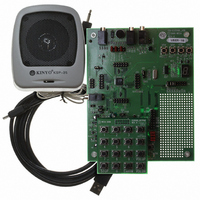ISD-ES15100_USB Nuvoton Technology Corporation of America, ISD-ES15100_USB Datasheet - Page 24

ISD-ES15100_USB
Manufacturer Part Number
ISD-ES15100_USB
Description
BOARD EVALUATION USB FOR I15100
Manufacturer
Nuvoton Technology Corporation of America
Series
ChipCorder®r
Specifications of ISD-ES15100_USB
Main Purpose
Audio, Voice Record/Playback
Embedded
No
Utilized Ic / Part
ISD15102, 04, 08, 16, 32
Primary Attributes
ASIC, 2 ~ 16 Minutes, Up to 48kHz, Class D Amp, Line/Digital/Mic Input
Secondary Attributes
Graphic User Interface
Lead Free Status / RoHS Status
Not applicable / Not applicable
‘Indirect Voice Prompts’ (L) is to make voice macro flexible. For example, it could be used to
announce time and temperature in users’ system. To announce a sentence like
outside temperature is
To emulate it on VPE, click on VP sub-screen (I) to get the index, then right-click on Rn, n = 0 ~ 7, to
update Rn, then click on ‘Play VP@Rn’ (L).
The volume control bar (M) provides an easy way to adjust the volume while playing a VP or a
message. ISD15100 provides three volume controls:
Resolution of the three volume controls is 0.25dB per step, total 256 steps for each volume control.
The volume control bar here is the VOLC. What VPE does is keep writing the CFG3 when the users
drag the volume control bar.
‘MICIN/ANAIN Enabled’ (N) indicates that the microphone path is enabled. When the microphone
path is enabled (either configured as differential or single-ended), the indicator turns red.
ISD15100 provides four ‘SPI Data Transfer’ commands. For details, please refer to design guide.
Take ‘SPI Decode’ (O) as an example, microcontroller sends compressed audio data (VPs or
recorded messages) to ISD15100 to decode. Double-click on ‘PLAYBACK MEMORY->PWM’ (P) to
set a playback path for ‘SPI Decode’. Check ‘CTS SPI’ (Q) if users want a continuous SPI
transaction, which means VPE ignores all other tasks before the ‘SPI Data Transfer’ command
finishes. Right click on the Filename blank (R) to assign a compressed audio file, and then click on
‘SPI Decode’ (O).
Users can try different clock settings (S). Please note that clock setting must match the real
configuration on board or the ISD15100 won’t work. Below is a table of some common settings:
‘Read ID’ (T) reads back the four-byte ISD15100 ID.
•
•
•
•
•
•
Microcontroller gets the time
system’s timer and sensor.
Write the corresponding voice prompt indexes of
Execute the voice macro of that sentence.
VOLA: volume control for the digital audio data from I2S or analog inputs.
VOLB: volume control for the digital audio data from decompression block or SPI.
VOLC: master volume control for PWM, AUDOUT, AUXOUT and I2S outputs.
0x34
0x36
0x37
0x27
0x17
Internal oscillator with internal resistor
Internal oscillator with 80kohm external resistor
2.048 MHz crystal
4.049 MHz crystal
11.2896 MHz crystal
Figure 4-1 SPI Send Compressed Data to Decode
70
degree
Table 4-1 Some Common Clock Settings
Fahrenheit‘, do the following:
(7:15
am) and temperature
7, 15, am,
Publication Release Date: May 21, 2008
(70
and
degree Fahrenheit) from the
PRELIMINARY
70
into R0, R1, R2, and R3.
‘It is
Revision 151.003
7:15
am; the
24









